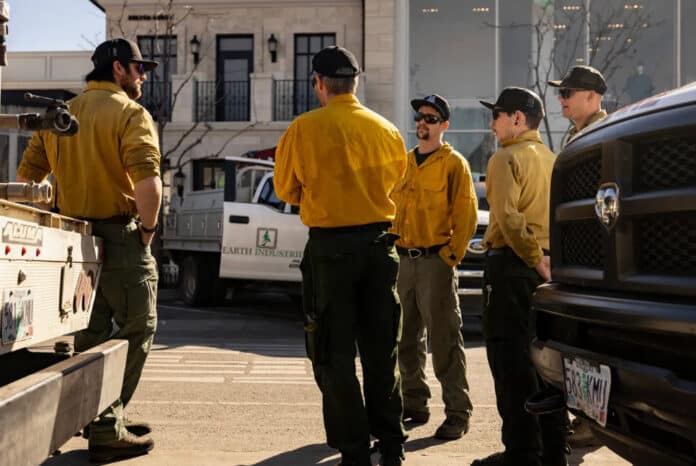CalMatters is joining with our public media partners at PBS SoCal, LAist and KCRW to bring you reliable, essential, free information to support people affected by the wildfires and keep all Californians up to date. Sign up for the Daily Wildfire Updates newsletter.
Robert MacKenzie is an assistant fire chief — but not the kind who works for your local fire department. As the Palisades Fire bore down on Southern California last week, the private fire crew he oversees headed out to help defend homes for their customers: insurance companies that offer wildfire protection to wealthy homeowners and others with the coverage built into their policies.
Working with lists of high-risk properties provided by insurers, the team from Capstone Fire and Safety Management aims to arrive at houses before a fire does, then make changes to the structure that will give it the best chance of survival. If a fire is getting close, they’ll smear a fire-protective gel on the side of the home, then get out.
“If the windows are open, maybe we can close them. If there’s a woodpile that’s too close to the home, we can move it,” said MacKenzie, who ran an in-house fire department for Southern California Edison before coming to work for Capstone. “Ninety percent of what we do is prevention.”
Capstone is part of a growing and controversial ecosystem of private firefighting companies that have seen themselves thrust into the spotlight as some of the wealthiest neighborhoods in Los Angeles have gone up in flames. It includes firefighters directly contracted with government agencies as well as those who work for insurance companies and directly for rich families and developers.
As California faces a future of more frequent and severe firestorms, the current fires have made clear that private companies are one way insurers and homeowners will respond to that threat. They’ve also posed the question of how the state should regulate private firefighters and how they should communicate with the public firefighting agencies leading disaster response.
“Ninety percent of what we do is prevention.”
Robert Mackenzie, assistant fire chief, capstone fire and safety management


















